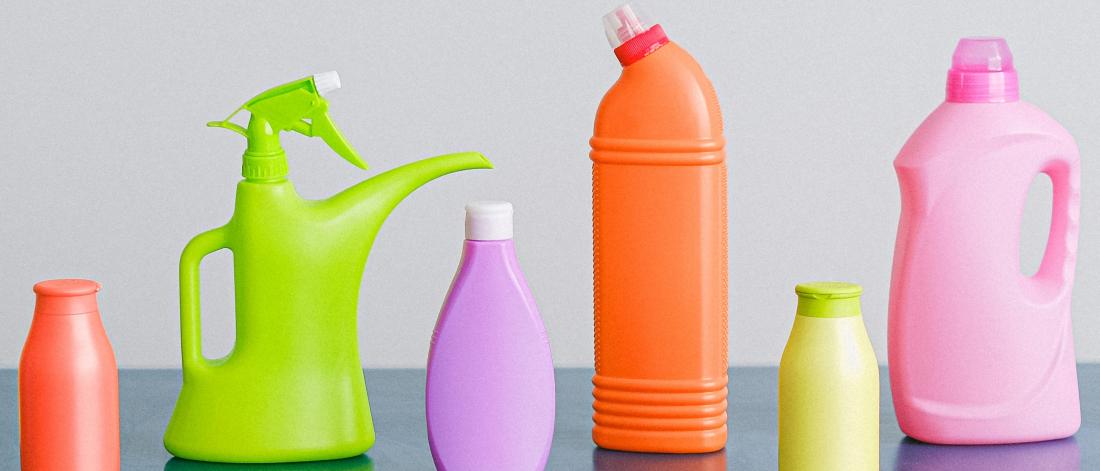Chemical safety
The Chemical Safety Program facilitates and ensures the safe and knowledgeable use of chemicals in the workplace, lab and classroom.

Chemical safety
(WHMIS) Workplace Hazardous Materials Information System
The elements of the Workplace Hazardous Materials Information System (WHMIS) communicate health and safety information about hazardous materials in the workplace. This includes hazard classification, labels, Safety Data Sheets (SDS), and worker education and training.
Labels
All chemicals require specific labelling to inform workers of the hazards associated with the materials they are working with. When a chemical has lost its supplier label, is transferred into a secondary container, or is a new, synthesized material, you can use the following workplace labels on containers:
UM Workplace Label Instructions and Templates (.pdf)
UM Lab Sample Label Template 2x4 (PDF)
Safety Data Sheets (SDS)
SDSs provide important information including the handling, storage, and first aid measures associated with a particular chemical. SDSs must be readily accessible by those working with the chemical. SDSs may be saved digitally or managed locally in binders, speak to your supervisor or WHMIS Coordinator to find the location of your SDSs.
The University of Manitoba is in the process of moving all SDS binders onto an online software called Chemwatch. If your SDS binder has already been relocated, you can use the following link to access SDS by using the search boxes:
If you are a designated SDS Manager for your area or lab, please contact EHSO to have those privileges added to your account. Contact EHSO directly for help with finding an SDS or managing them.
Training
The Chemical Safety Program provides WHMIS training for all employees and students who work with or may be exposed to chemicals.
This training must be completed prior to beginning any work with chemicals. WHMIS training at the University of Manitoba can be accessed and completed through UM Learn.
WHMIS coordinators
A WHMIS coordinator assists departments and program areas at the University of Manitoba in complying with provincial WHMIS legislation. WHMIS coordinators may be required to attend meetings to discuss relevant topics including:
- WHMIS requirements at the University of Manitoba
- WHMIS training on UM Learn
More information regarding WHMIS and the WHMIS Coordinator role can be found in the Chemical Safety section of the EHSO page on the UM Intranet.
For help implementing a WHMIS Coordinator in your area, contact EHSO.
Chemical inventory
Chemical inventories are kept using a software called Vertére. Managing a chemical inventory digitally facilitates easily accessible and up-to-date inventories, and allows for the management of chemical stock, sharing between labs or departments, and for better oversight in emergencies and regulatory reporting. The University of Manitoba is a member of HECHMET – a consortium of Canadian universities that supports the use of Vertére.
Instructional materials and further information can be found on the UM Intranet. If you would like to begin the process of moving your chemical inventory into Vertére, contact EHSO directly.
Storage and handling
Chemicals must be stored, handled, and transported properly to prevent chemical exposure, injury, or release. Details can be found in the Chemical Storage and Handling documentation found on the Chemical Safety page on the UM Intranet, including guidance documents for specific chemicals that are commonly found on campus.
Signs for storage and handling:
Flammable Refrigerator Storage Sign (PDF)
Chemical waste
When chemicals are no longer needed or useful, but still have hazardous properties or contain hazardous ingredients, they are considered hazardous waste. They must be properly managed, which can include sharing with another lab or disposal through the Hazardous Waste Program. Please see the Hazardous Waste section on the Hazardous Materials UM Intranet page for more information.
Chemical safety lab permits
Lab and storage spaces that are used for research or teaching and meet threshold quantities of chemicals are required to have a chemical safety permit. For more information refer to the Chemical Safety page, located on the UM Intranet. Chemical safety permits are administered through the Environmental Health and Safety Assistant (EHSA) database.
| Chemical Type | Total quantity requiring a Chemical Safety Permit |
|---|---|
| Flammables(including aerosols) | > 4 litres or kilograms |
| Compressed or Asphyxiant Gases | Any quantity |
| Corrosives | > 4 litres or kilograms |
| Oxidizing | > 1 litre or kilogram |
| Toxic materials | > 4 litres or kilograms |
| Self- or - Water- Reactive, Pyrophoric | Any quantity |
| Natural gas | Any operational valve |
Spill response
A chemical spill is any unplanned release of a chemical. The severity and appropriate response to each spill may vary greatly according to the type and quantity of material spilled and other factors.
Minor chemical spills that do not pose an immediate threat to health and safety can usually be cleaned up by the employee or student involved in the spill. A major spill that presents an immediate threat or that requires additional planning and resources, may require the assistance of the Environmental Health and Safety Office (EHSO), Security Services, and/or emergency response services.
For details on how to respond to a chemical spill, refer to the Chemical Spill Response Procedure on the UM Intranet under Chemical safety.
Post exposure protocol for chemicals
Where an incident occurs that involves chemical exposure, special first aid steps may need to be taken. Chemical post-exposure protocol is covered in chemical safety training for all employees, students, and volunteers who are working with chemicals, and specific response steps may be included in on-the-job training for those who are working with higher-risk chemicals.
Contact us
Environmental Health and Safety
Room 191 Extended Education Complex
406 University Crescent
University of Manitoba (Fort Garry campus)
Winnipeg, MB R3T 2N2 Canada
P310 Pathology Building
770 Bannatyne Avenue
University of Manitoba (Bannatyne Campus)
